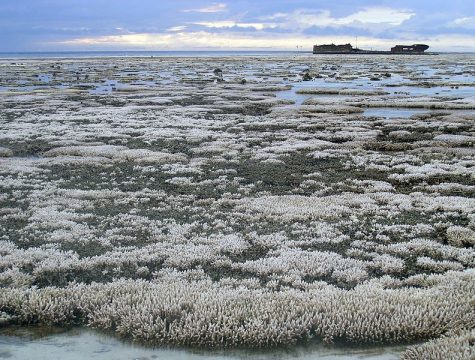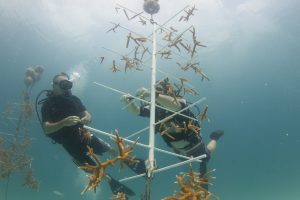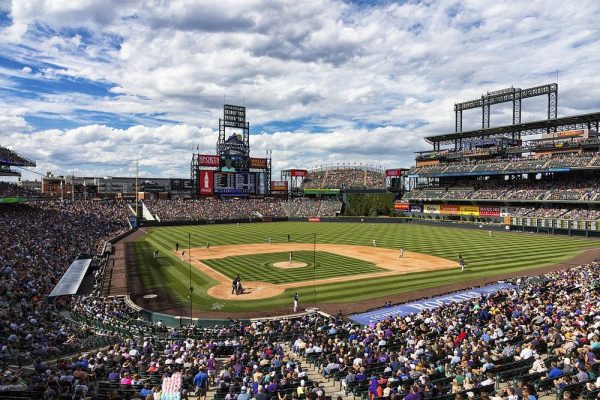Climate Change: Coral Bleaching
Bleached coral reef in the Pacific Ocean
The ocean is a magical and majestic place, but we have to work hard to keep it that way. The greenhouse gases that factories produce are causing great harm to our ocean’s ecosystems and species, and we need to prevent it from getting worse, or we could lose a lot more than our coral reefs.
The dramatic rise in water temperatures in the ocean as a result of climate change and global warming has an extremely negative effect on marine life. The greenhouse gases are harnessing higher amounts of the sun’s energy, which causes the water to absorb more heat. Greenhouse gasses are produced when we burn oil, coal, and gas in factories, thus polluting the air.
These greenhouse gases cause coral bleaching, a term used to describe the process that kills coral as a result of rising water temperatures. Coral reefs are so colorful because they have a special relationship with algae called zooxanthellae. When coral is exposed to abnormally high temperatures, it gets stressed and expels these zooxanthellae, which turns it from brightly colored to white.

Coral is a massive participant in the ocean’s ecosystem and is vital because many other species live in these coral reefs. Fish, octopi, eels, lobsters, seahorses, and sea sponges are some of the thousands of species that rely on coral reefs for their survival. Coral reefs are often referred to as living museums because of how beautiful they are and how much life thrives within them.
Sadly, about 75% of coral reefs experience ocean temperatures high enough to trigger bleaching because of the greenhouse gases we have produced, and with them, we lose the lives of many majestic beings who live in the sea. In the 1980s, only 8% of coral reefs were being bleached every year, but since 2016, we have had more than 31% of coral reefs bleached every year, which is 31% too much.
Although it may seem like we are doomed to have all the coral bleached in the next few years, there are small everyday actions that can help coral reefs and their ecosystems stay healthy. If we can reduce runoff of stormwater and fertilizer, and discontinue the use of pesticides and herbicides, slowly but surely, we will keep the coral intact and healthy.
Even with these actions that we can take, the biggest issue is still greenhouse gases, which takes a much larger effort to stop than just everyday actions. To stop overall climate change and emissions of harmful chemicals and gases into our environment, we need the whole world to be working for it. We need to take immediate action globally to keep our ecosystems alive and thriving. We need to stop burning oil, coal, and gas that produce greenhouse gasses, and lower carbon emissions and chemical use, and we need to transition climate-smart policies worldwide.
People worldwide support the burning of fossil fuels because it is all they know; fossil fuels have been propelling our vehicles, powering our businesses, and lighting our homes for over a century. Even today, gas, coal, and oil provide over 80% of our energy needs, and the whole planet is paying the price.
If we don’t take action soon, more than 75% of the coral reefs could become bleached, and many lives would leave our oceans with them. These reefs are living museums filled with beings who rely on the coral to survive and keep predators away, and I know I would like to see them out of danger one day.
Zoe Horner is a junior at HWRHS and is a student journalist for the General Consensus. Zoe went to a Waldorf school until eighth grade, where students...








